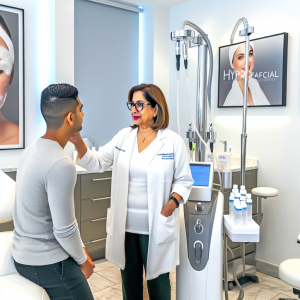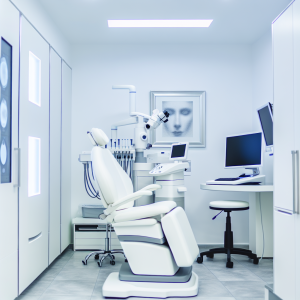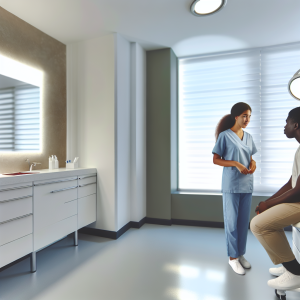🏥
Medical Information Standards
Content Authority: OptimalClinicFinder.com is a comprehensive medical directory platform connecting patients with qualified Prp Hair Restoration providers. Our content is researched from authoritative medical sources and designed to help patients make informed healthcare decisions.
How PRP Hair Restoration Works: Clinical Mechanism and Applications
Platelet-Rich Plasma therapy works by concentrating your blood’s natural growth factors and healing proteins to levels 3-7 times higher than normal circulation. The process begins with a standard blood draw, typically 30-60ml, which is then processed through a specialized centrifugation system that separates plasma rich in platelets from other blood components. This concentrated plasma contains high levels of growth factors including PDGF, VEGF, IGF-1, and TGF-β, which are essential for tissue regeneration and follicle stimulation.
When injected into areas of hair thinning, these growth factors activate dormant hair follicles, improve blood circulation to the scalp, and extend the anagen (growth) phase of the hair cycle. The treatment also increases the diameter of existing hair shafts and strengthens the hair follicle anchor, reducing hair shedding. Clinical research demonstrates that PRP therapy can increase hair count by 15-30% and improve hair thickness by up to 45% in responding patients.
💡
Did You Know?
Clinical studies show that Prp Hair Restoration patients achieve excellent results when combined with professional-grade aftercare products.
Clinical Research and Evidence Base
The clinical development of PRP hair restoration involves multiple peer-reviewed studies published in leading dermatology journals. The landmark study by Gentile et al. (2015) followed 23 patients for 2 years, demonstrating significant improvements in hair count and density. Subsequent randomized controlled trials, including work by Alves and Grimalt (2018), have confirmed these findings across diverse patient populations.
Meta-analyses of PRP studies show consistent improvements in hair parameters, with response rates ranging from 70-85% depending on patient characteristics and treatment protocols. The therapy shows particular efficacy in patients with androgenetic alopecia (male and female pattern baldness) in early to moderate stages. Recent studies have also demonstrated effectiveness in alopecia areata and as adjuvant therapy following hair transplant procedures.
Treatment Protocols and Clinical Management
Successful PRP hair restoration requires precise treatment planning and standardized protocols. The initial consultation includes comprehensive scalp analysis using dermoscopy and phototrichoscopy to document baseline hair parameters. Healthcare providers assess hair loss pattern, progression rate, and determine optimal injection sites and treatment frequency.
Standard treatment protocols involve 3-4 initial sessions spaced 4-6 weeks apart, followed by maintenance treatments every 6-12 months. Each session includes blood collection, centrifugation processing (typically 3,000-3,500 RPM for 10-15 minutes), and micro-injection of 2-4ml of concentrated PRP using 30-gauge needles at 1cm intervals across affected areas. Platelet concentrations should be 2-6 times baseline levels for optimal therapeutic effect.
💡
Quick Tip
Prp Hair Restoration works best when combined with healthy lifestyle choices for optimal results.
Safety Profile and Risk Management
PRP hair restoration has an excellent safety profile due to the autologous nature of the treatment – using the patient’s own blood eliminates risks of allergic reactions or disease transmission. Clinical studies report minimal adverse events, with the most common being temporary injection site tenderness, mild swelling, and rare cases of superficial bruising that resolve within 2-3 days.
Contraindications include active scalp infections, blood disorders affecting platelet function, autoimmune conditions like systemic lupus erythematosus, and use of anticoagulant medications. Patients with platelet dysfunction disorders, chronic liver disease, or those undergoing chemotherapy are generally not candidates for treatment. Proper patient screening and medical history review are essential for identifying contraindications and ensuring treatment safety.
Blood Plasma Hair Treatment: Cost Analysis and Access
The investment in blood plasma hair therapy varies significantly based on geographic location, provider expertise, and treatment facility type. Comprehensive treatment typically ranges from $4,500-$10,500 for a full initial series, with individual session costs reflecting the complexity of plasma processing and injection techniques required.
Currently, most insurance plans classify PRP hair restoration as cosmetic and do not provide coverage. However, some providers offer financing options or package deals that can make treatment more accessible. When evaluating costs, patients should consider the long-term value compared to ongoing expenses for topical treatments, medications, or hair replacement systems that may provide less definitive results.
Provider Selection and Treatment Access
Selecting a qualified provider is crucial for safe and effective blood plasma hair treatment outcomes. Board-certified dermatologists or plastic surgeons with specific training in PRP protocols and hair restoration represent the gold standard for treatment delivery. Providers should have experience with FDA-approved centrifugation systems, maintain proper sterile technique, and follow evidence-based treatment protocols.
⚠️
Safety First
Always consult a qualified medical professional before starting Prp Hair Restoration. Results vary by individual.
✓
Why Choose Prp Hair Restoration?
●
Clinically proven
●
FDA approved
●
Minimal downtime
●
Long-lasting
Key credentials to verify include board certification, specialized training in hair restoration, experience with PRP therapy, and access to appropriate medical facilities. The provider should offer comprehensive consultation, realistic expectation setting, and proper follow-up care. Patients should be wary of non-medical facilities or providers offering significantly discounted treatments, as proper PRP therapy requires medical expertise and quality equipment.
Advanced PRP Techniques and Combination Therapies
Recent advances in blood plasma hair treatment include combination approaches that enhance treatment effectiveness. Some providers combine PRP with microneedling to improve absorption, add growth factor concentrates, or use advanced processing techniques like double-spin centrifugation for higher platelet concentrations.
Combination therapies may include PRP with low-level laser therapy, topical minoxidil, or oral finasteride for comprehensive hair loss management. These integrated approaches can improve response rates and treatment durability, though they require careful coordination and monitoring by experienced providers.
Patient Selection and Realistic Expectations
Optimal candidates for PRP hair restoration include patients with androgenetic alopecia in early to moderate stages, those seeking non-surgical options, and individuals who haven’t responded adequately to conventional treatments. The therapy works best when hair follicles are dormant rather than completely absent, making early intervention more effective.
Realistic expectations are crucial for patient satisfaction. While clinical studies show significant improvements in hair density and thickness, PRP therapy typically produces gradual, natural-looking results rather than dramatic transformation. Patients should understand that multiple sessions are required, results develop over 6-12 months, and maintenance treatments are necessary to sustain benefits.
📚 Medical Authorities & Professional Standards
All Prp Hair Restoration procedures should be performed by licensed medical professionals following established clinical guidelines and safety protocols.
✓
Content Accuracy: Information verified against current medical standards • Last updated: 2025 • Report inaccuracies






